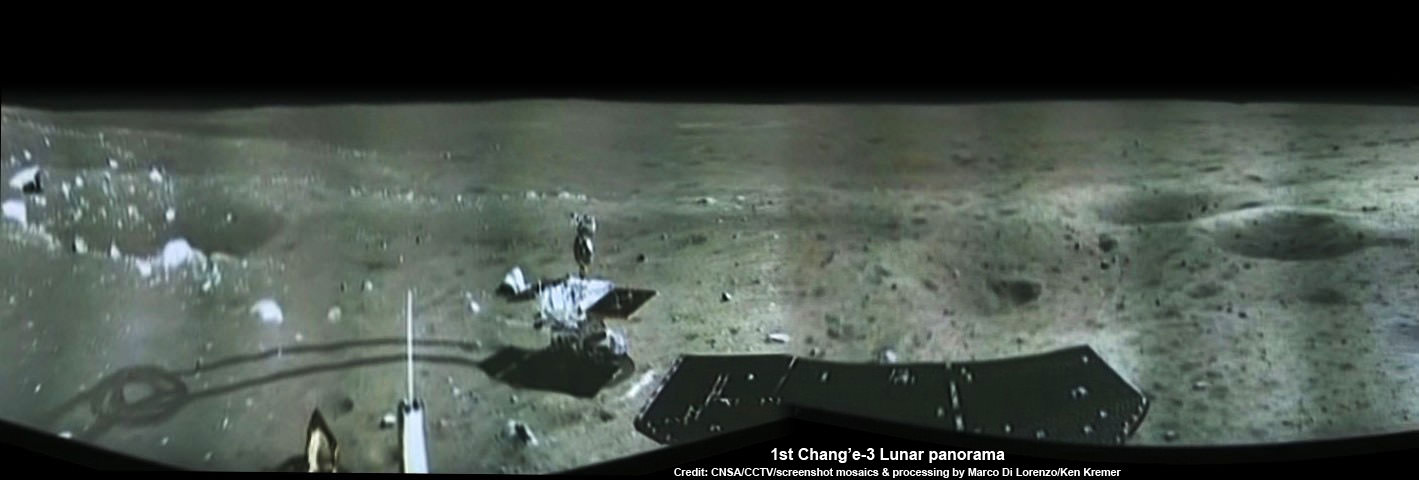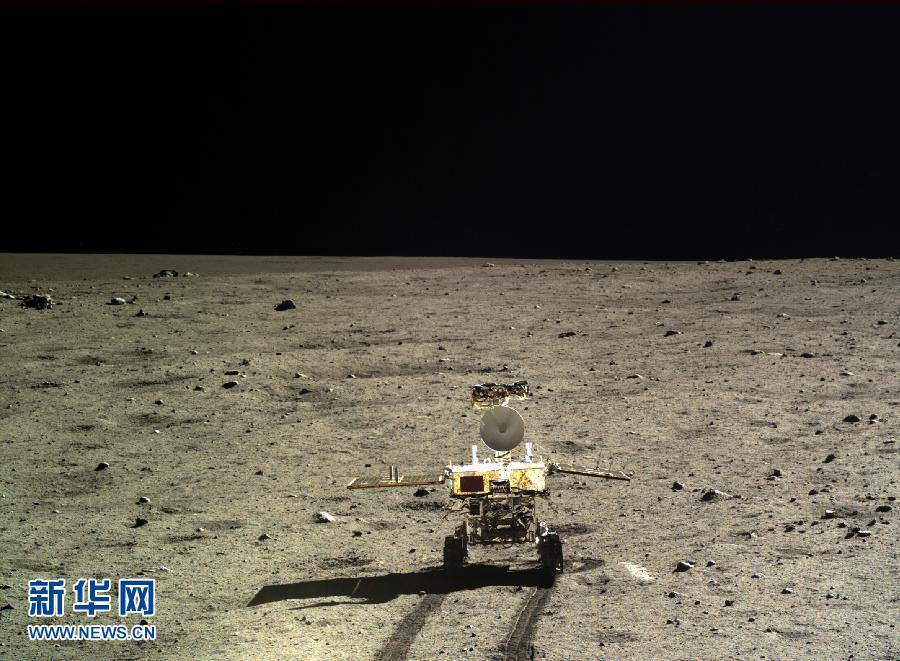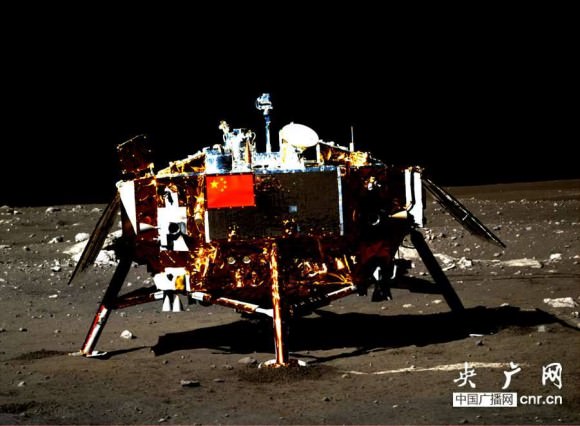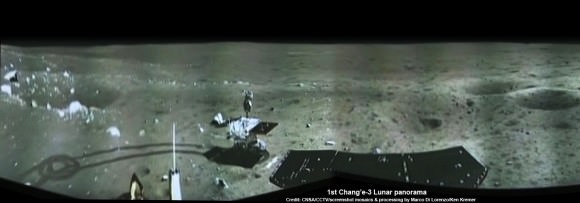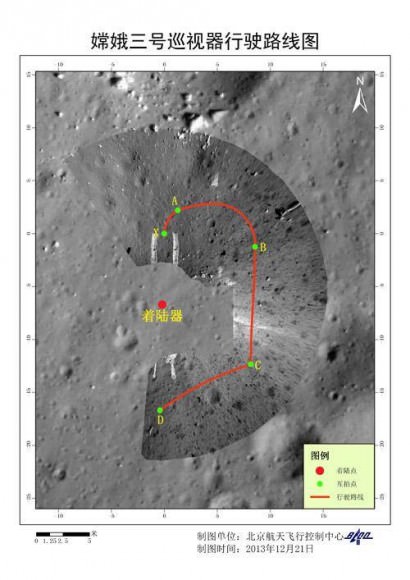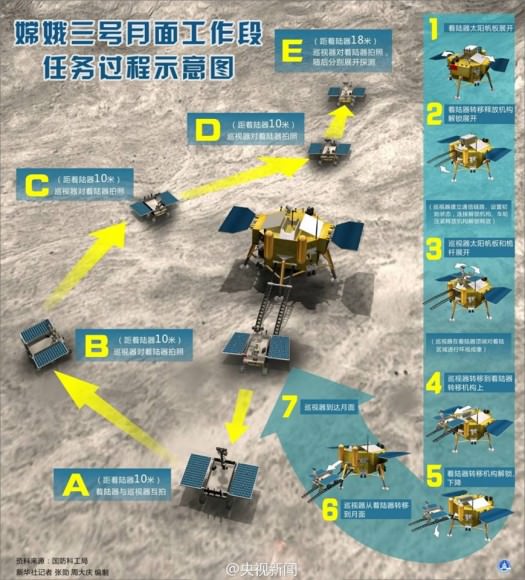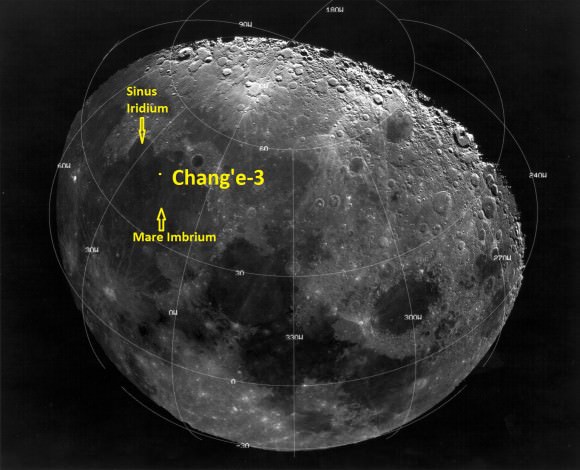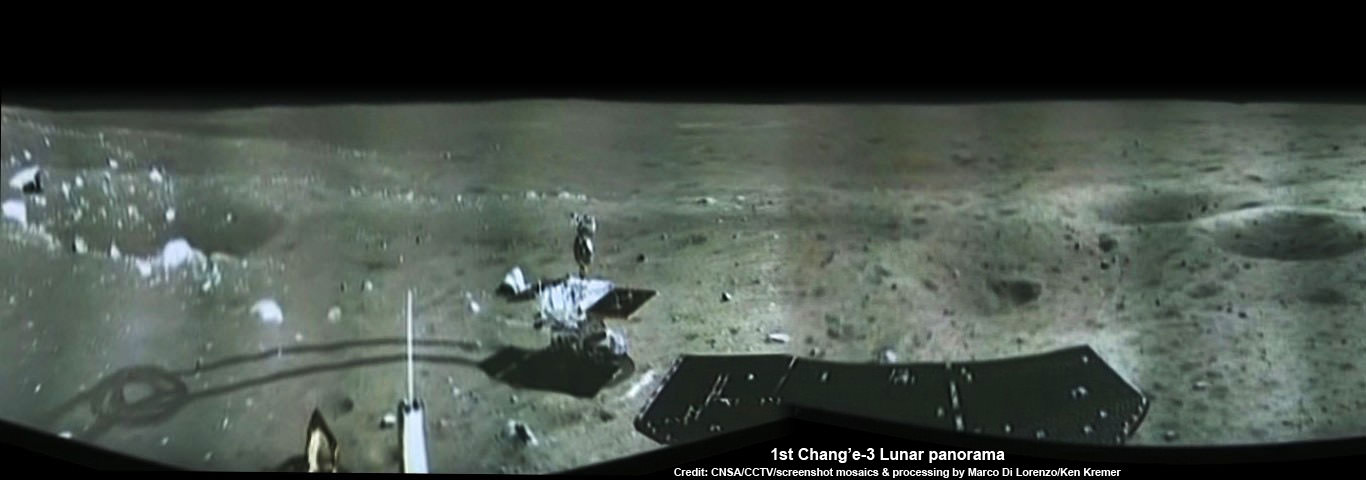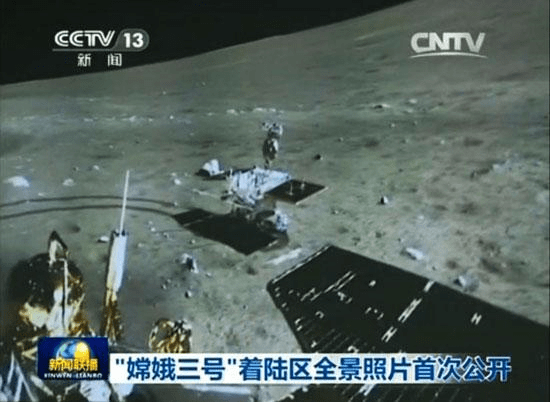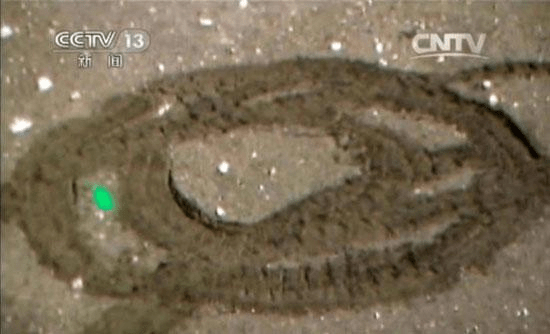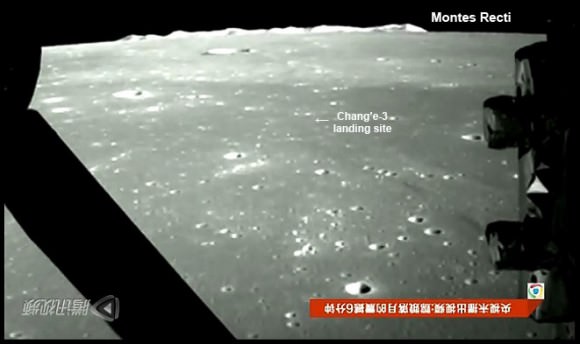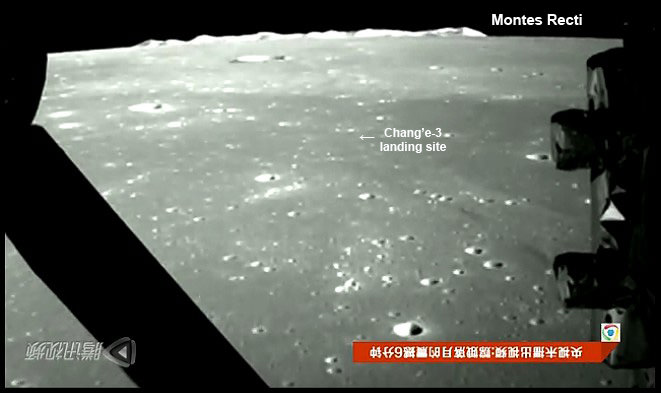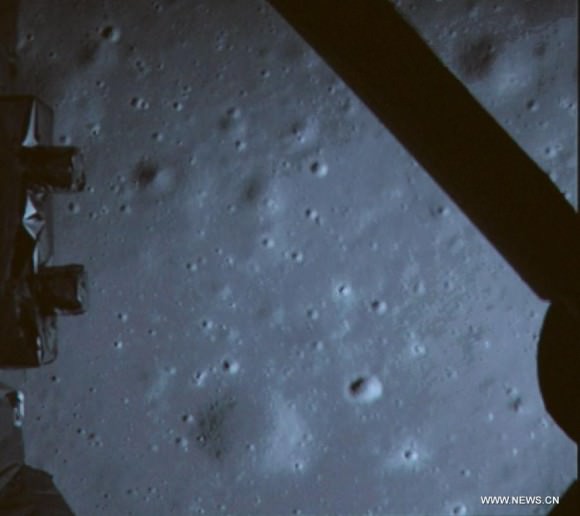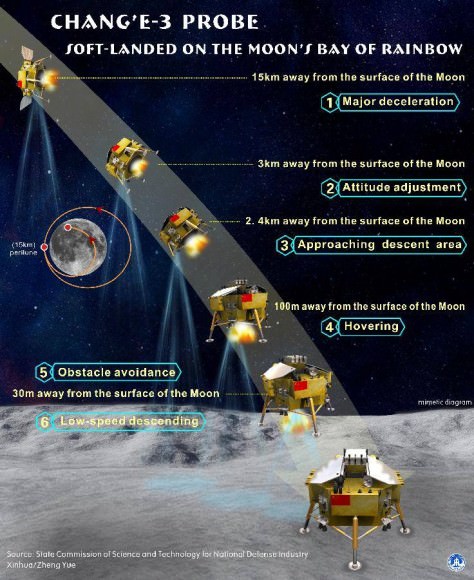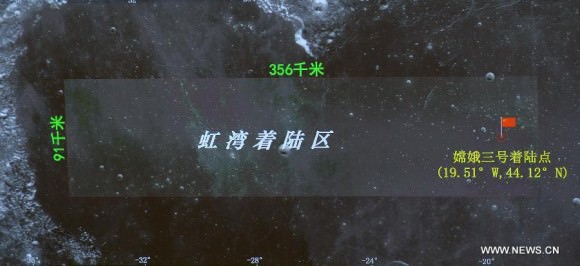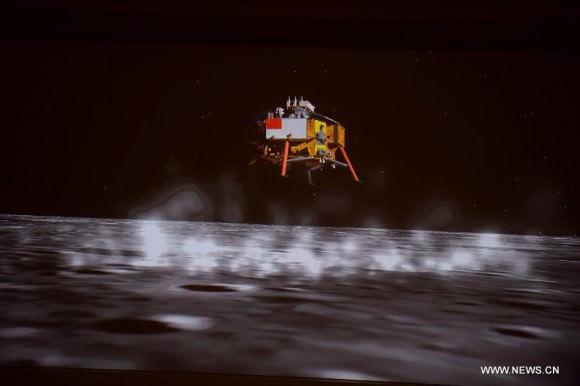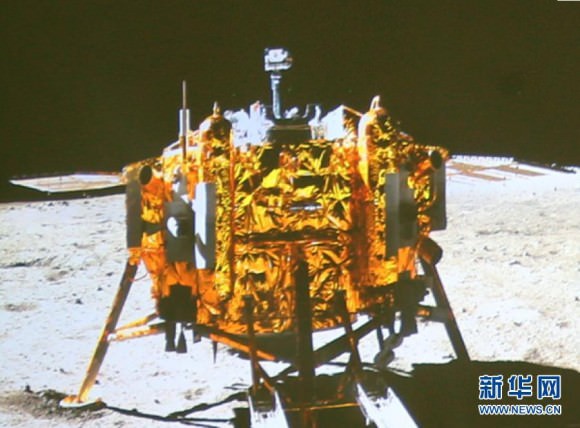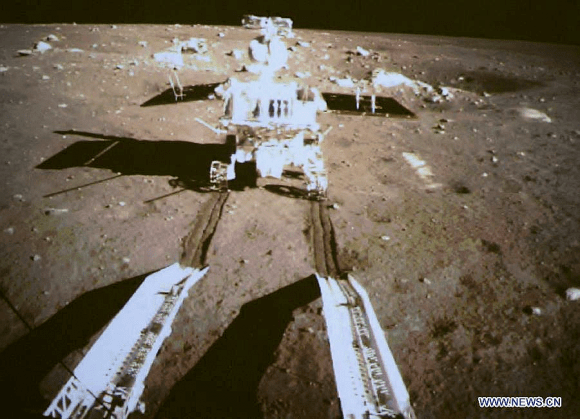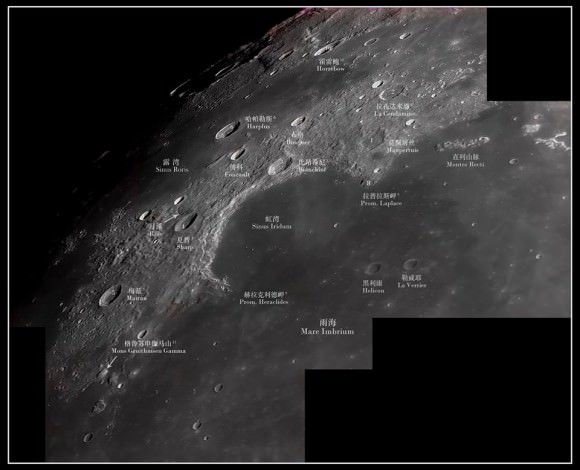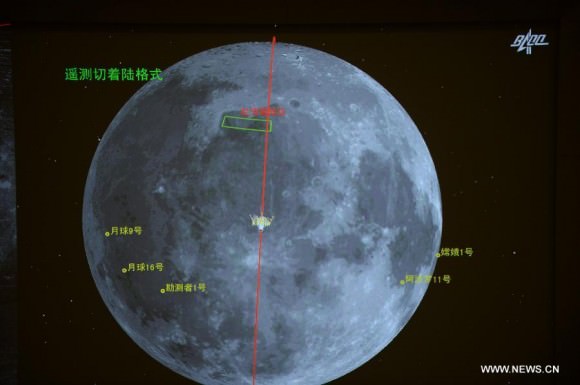1st Chang’e-3 Lunar Panorama
Portion of 1st panorama around Chang’e-3 landing site showing China’s Yutu rover leaving tracks in the lunar soil as it drives across the Moon’s surface on Dec. 15, 2013. Images taken by Chang’e-3 lander following Dec. 14 touchdown. Panoramic view was created from screen shots of a news video assembled into a mosaic.
Credit: CNSA/CCTV/screenshot mosaics & processing by Marco Di Lorenzo/Ken Kremer
See below robotic arm screenshots – – Story updated [/caption]
As night fell on the Earth’s Moon, China’s Yutu rover and mothership lander have both entered a state of hibernation determined to survive the frigidly harsh lunar night upon the magnificently desolate gray plains.
Yutu went to sleep at 5:23 a.m. Dec. 26, Beijing time, upon a command sent by mission control at the Beijing Aerospace Control Center (BACC), according to China’s State Administration of Science, Technology and Industry for National Defence (SASTIND).
The Chang’e-3 lander began its long nap hours earlier at 11:00 a.m. Beijing time on Christmas Day, Dec. 25.
The vehicles must now endure the lunar night, which spans 14 Earth days in length, as well as the utterly low temperatures which plunge to below minus 180 degrees Celsius.
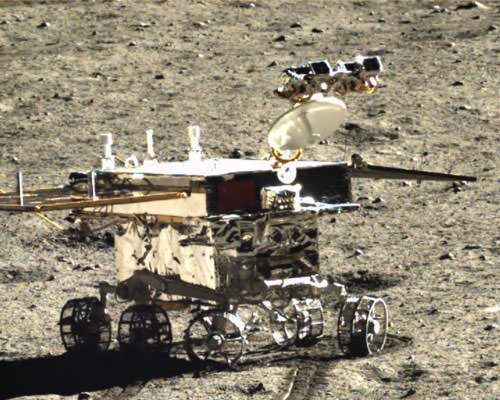
Scientists completed a series of engineering tests on the probes to ensure they were ready to withstand the steep temperature drop, said Wu Fenglei of the Beijing Aerospace Control Center, to the Xinhua state news agency.
Since there is no sunlight, the solar panels can’t provide any power and have been folded back.
So they face a massive engineering challenge to endure the extremely cold lunar night.
Therefore in order to survive the frigid lunar environment, a radioisotopic heat source is onboard to provide heat to safeguard the rovers and landers delicate computer and electronics subsystems via the thermal control system.
They are situated inside a warmed box below the deck that must be maintained at a minimum temperature of about minus 40 degrees Celsius to prevent debilitating damage.
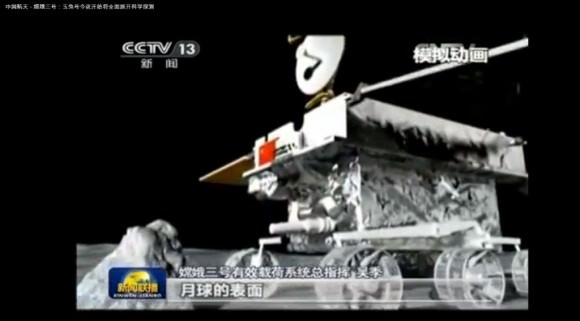
So the two spacecraft still have to prove they can hibernate and eventually emerge intact from the unforgiving lunar night.
Just prior to going to sleep, the 140 kg Yutu rover flexed its robotic arm and Chinese space engineers at BACC completed an initial assessment testing its joints and control mechanisms.
The short robotic arm appears similar in form and function to the one on NASA’s famous Spirit and Opportunity Mars rovers.
It is equipped with an alpha particle X-ray instrument (APXS) – on the terminus – to determine the composition of lunar rocks and soil.
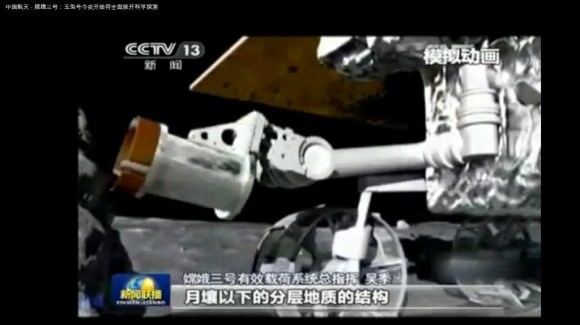
The robotic pair of spacecraft safely soft landed on the Moon on Dec. 14 at Mare Imbrium, nearby the Bay of Rainbows, or Sinus Iridum region. It is located in the upper left portion of the moon as seen from Earth. You can easily see the landing site with your own eyes.
Barely seven hours after the history making touchdown, ‘Yutu’ was painstakingly lowered from its perch atop the lander and then successfully drove all six wheels onto the moon’s surface on Dec. 15.
Yutu left noticeable tracks behind, several centimeters deep, as the wheels cut into the loose lunar regolith.
The Chang’e-3 lander and rover then conducted an initial survey of the stark lunar landing site, pockmarked with craters and small boulders.
They took an initial pair of portraits of one another. Read my earlier report – here.
The four legged lunar lander also snapped the missions first panoramic view of the touchdown spot at Mare Imbrium using three panoramic cameras (Pancams) pointing in different directions. Read my earlier report – here.
See the eerie panoramic view of the landing site showing Yutu’s first moments on the alien lunar surface in our screenshot mosaic above – and here.
See the dramatic video with an astronauts eye view of the lunar descent and touchdown in my prior story – here.
Yutu, which translates as ‘Jade Rabbit’, was then directed to travel in a semicircular path around the right side of the lander and is heading to the south.
Its currently napping about 40 meters to the south.
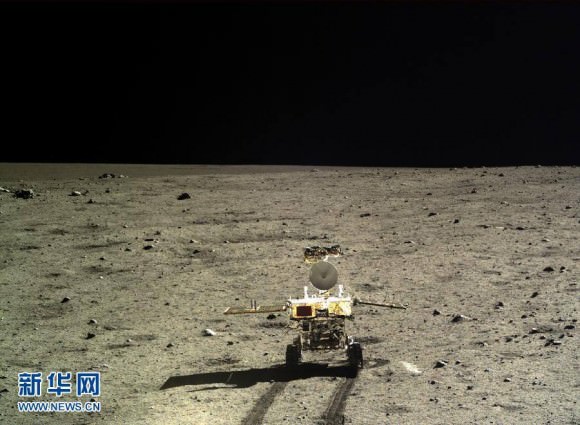
‘Jade Rabbit’ will resume the lunar trek upon awakening, along with the stationary lander, from their extended two week slumber around Jan 12, 2014.
Yutu will depart the Chang’e-3 landing zone forever and rove the moon’s surface for investigations expected to last at least 3 months – and perhaps longer depending on its robustness in the unforgiving space environment.
The robotic rover will use its suite of four science instruments to survey the moon’s geological structure and composition to locate the moon’s natural resources for use by potential future Chinese astronauts, perhaps a decade from now.
NASA’s Lunar Reconnaissance Orbiter (LRO) imaged the Chang’e-3 landing site in western Mare Imbrium around Christmas time on 24 and 25 December with its high resolution LROC camera and we’ll feature them here when available.
China is only the 3rd country in the world to successfully soft land a spacecraft on Earth’s nearest neighbor after the United States and the Soviet Union.
The best is surely yet to come!
Stay tuned here for Ken’s continuing Chang’e-3, LADEE, MAVEN, MOM, Mars rover and more news.

